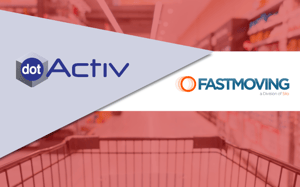The retail apocalypse may have its origins in North America but that doesn’t mean there hasn’t been a knock-on effect for the rest of the world. The UK retail sector, for example, is struggling. So too is most of Europe. Under this increasing pressure, you need to find ways to enhance your efficiency and maximise your resources. That includes looking after your most valuable asset: your shelf space.
In our experience, one of the most straightforward ways for you to save money is through data-driven product layouts. The best part is that if you’re a supplier, you should get involved too.
A product layout is best displayed via a planogram, they are a data-driven visual representation of how products should be merchandised on shelves to maximise sales and efficiency. The data needed to build an effective layout includes sales data, syndicated data, SKU information, fixture information and product attributes to name a few.
What are the cost-saving benefits that retailers, big and small, are seeing in this method of merchandising their products? While the below isn’t an inexhaustive list, it should help give you a better idea:
1. Shelf replenishments are more efficient
From a space planning perspective, days of supply (DoS) speaks to the number of days it will take for a product to sell out on shelves. This is based on the number of products on the shelf and the recent sales for that product.
With a data-driven product layout, you can merchandise your shelves in such a way that you achieve an even DoS. As a result, you can replenish your shelves at regular intervals. This practical approach results in reduced shelf replenishment costs because it’s no longer a haphazard exercise.
A bonus of achieving even DoS is that it also means a reduction in your out of stocks. By having a firm grasp of your shelf inventory replenishment intervals, the staff are your stores are more likely to know exactly when to restock shelves so that gaps don’t appear.
Besides the practical implications of shelf replenishment, there is also the broader subject of inventory replenishment to consider.
The last thing you’d want is to order too much of a particular product. Since the planogram stores shelf capacity, DoS and other critical information, it is an absolute necessity for making intelligent inventory replenishment decisions. In fact, you can feed planogram data directly into your inventory replenishment systems to supplement the automated inventory replenishment process.
Finally, the planogram aids in managing the product lifecycle by considering what stock is still available in your storerooms and distribution centres (DC’s) before removing the item from the planogram.
Just because a product is no longer listed doesn't mean that you should remove it from shelves right away. The wastage involved in not getting these concepts right is significant.
2. Store openings are more efficient
Data-driven product layouts can help you with opening orders for new store openings. More specifically, they allow you to ensure that you can order the precise amount of stock required to fill your shelves to capacity. This reduces the risk of under or overstocking.
Secondly, they can assist you to allocate the ideal amount of space to each of your products by basing space allocations on those stores which are likely to be similar. The key with store openings is that you should be looking at data gathered from similar stores to set up your product layout, thereby taking any unnecessary guesswork out of the equation.
Thirdly, it allows you to merchandise your categories faster. Because each product grouping has an exact plan for how the products should be merchandised, the job of doing the initial merchandising is a simple case of following the planogram to completion.
Lastly, by using exact plans, you can order the correct retail fixtures for your store openings. With the planning options available, it is no longer necessary to place incorrect fixtures or product orders for store openings.
3. Maximise the selling potential of shelf space
Planograms enable you to control the layout of each of your store’s from your Head Office. That means that any category tactics that you decide on at Head Office can be realised at the store level when implementing the planogram.
They can also help you with logical product positioning and grouping. Shoppers expect to find certain products together, and without a planogram, which represents these groupings along with merchandising principles, the category is likely to be difficult to shop.
Create data-driven product layouts that improve your shelf space performance with DotActiv software
By understanding your product groupings and merchandising principles, you can ensure that your products are positioned in the correct place on the shelf so that it’s easy for your customers to shop.
Finally, you can understand your shelf space performance so as to maximise the selling potential of your shelf space. A data-driven planogram is the best way to allocate appropriate shelf space to products since sales and syndicated data helps you to calculate the ideal space allocations for each of your products.
4. Retailers can enlist the help of their suppliers
It is common practice for suppliers and retailers to combine their resources, knowledge and strengths - working together to achieve optimal space planning is no exception.
If you’re a supplier, you can create planograms on behalf of retailers with the aim of growing the overall sales of a category, thereby gaining an advantage for their own products in the process. Retailers benefit from this because the suppliers absorb the cost and share their expertise around the category.
For suppliers, it’s just as beneficial to get involved in creating these product layouts because it affords them the opportunity to gain influence on where their products are merchandised along with how much space they get on shelves.
Conclusion
Whether you are a retailer looking to improve shelf space and inventory efficiency or a supplier looking to gain influence over how your products are merchandised - planograms are a must. Interested in getting real results for your business? You can visit our online store here to find out more or book your custom exploratory consultation here.
*This article was originally posted on FastMoving.co.za.



